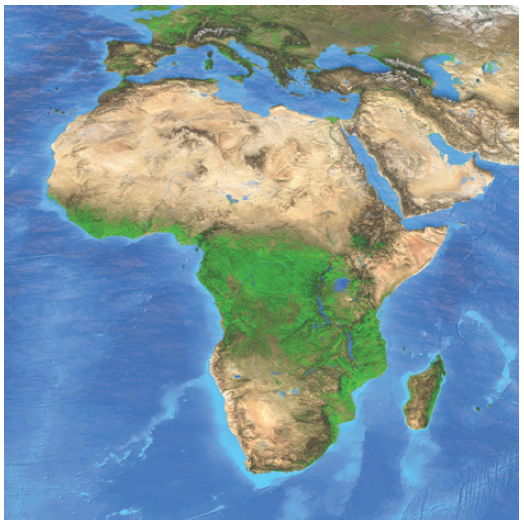Borrower Overview
TriLinc has provided financing to a leading value chain manager of agricultural products supporting over 15,000 farmers throughout Sub-Saharan Africa through an out-grower scheme implemented in order to bring more smallholder farmers into the company’s commercial supply chain. This out-grower scheme provides input finance, cultivation, and farm managements training, transport, and guaranteed markets for its participants. The company sources 80% of its African-originated commodities at the farm gate level through a network of year-round and seasonal procurement and distribution centers and warehouses. The company is engaged in the agricultural processing and global transportation of cashews, sugar, coffee, wheat, rice, maize, sesame seeds, and various types of oilseeds, pulses, and fertilizers.
The company is actively developing smallholder communities in Sub-Saharan Africa through a farmer foundation, started in 2013 that assesses increases in crop yield, farmers’ income, access to credit and inputs, greater farmer engagement, and adoption of conservation agriculture techniques such as organic fertilizer application and post-harvest treatment. TriLinc’s financing supports the company’s demand for stock and inventory financing for specific finished goods inventory in warehouses located throughout Zambia, Kenya, and Tanzania.
Market Overview

Although Singapore is a high-income country, an exception was made for this borrower’s high impact through trade finance in Kenya, Tanzania, and Zambia, countries that all meet TriLinc’s standards for its performance across relevant growth, stability and access metrics.1 Not only does the borrower’s business help bridge the $91 billion trade finance gap in Africa, but it also helps facilitate economic growth in Africa by expanding and diversifying Africa’s international trading partners.2 Moreover, the borrower’s efforts are aligned with Singapore’s national efforts to support African countries. In 2015, Singapore’s total trade activity with Africa amounted to over $8.1 billion and many Singaporean companies have expanded their presence in the African Market, especially in urban development, agribusiness, and oil and gas sectors.3 In 2015, Singapore ranked first across the East Asia and Pacific region on the World Bank’s Ease of doing Business Index.4 As the 7th largest economy in the East Asia and Pacific region with a GDP of 304 billion, the country’s well developed higher education system, goods market efficiency, and labor market efficiency led Singapore to benefit from the estimated 609 billion in foreign direct investment that flowed into the region in 2015.5 Robust domestic demand across East Asia and Pacific Region has helped spur regional GDP growth to 6.7 percent in 2015, which is projected to maintain stable through 2017.”6
Additional Sustainability & Impact Highlights
- Renewable Energy and Ecological Restoration – the company reports that it relies heavily on renewable energy sources, mainly solar energy on most of the company warehouses. Additionally, the firm has started a “Green Campaign” to plant more trees at operational sites, cultivating a more environmentally-friendly practice at sites in Tanzania, Malawi, Mozambique, Ethiopia, Zambia, India, Uganda, Kenya, and South Africa.
- Capacity Building and reducing inequality – the company reports that employees participate in regular training courses for general and fire safety, first aid, serious disease (HIV, Malaria, Ebola) awareness, energy conservation, pollution reduction, and much more. A strong human resource policy is in place to reduce inequality among its employees including a grading and performance management system, salary advances and loans and fair promotions.
- Adopting an integrated management system to ensure high standards – the company reports that has adopted an integrated management system that incorporates ISO 9001 Quality Management System, Hazardous Analysis & Critical Control Points and ISO 22000 Food Safety Management System, ISO 14001 Environmental Management System, ISO 5001 Energy Management System, OHSAS 18001 Occupational Health and Safety Management System, IFC Performance Standards and African Development Bank Operational Standards.
1There is no assurance that our investment in this company or this market will be successful 2African Development Bank Group, Trade Finance in Africa, 2017 3Ministry of Finance (Singapore), Singapore Strengthens Economic Ties with African Countries, 2016 4The World Bank, Doing Business 2015, Going Beyond Efficiency 5The World Bank, The World Development Indicators Database, 2015 6Global Economic Prospects, Having Fiscal Space and Using It, January 2015
The above information is as of the initial date of investment: April 23, 2015.
This borrower is no longer a TriLinc fund investment.
TriLinc originally performed an SDG mapping exercise in December 2017 to map all of our borrower companies, both current and exited from our portfolios, to specific SDGs based off of business activity. TriLinc’s official SDG alignment methodology was not finalized until June 30, 2018. For borrowers that had exited TriLinc’s portfolios prior to this time period, the selected SDGs for these borrower are a reflection of what TriLinc believes would have been the SDG alignment if 1) the SDGs had been in effect and 2) TriLinc had integrated the SDG alignment while the company was in the portfolio. The SDG mapping presented does not include input from Investment Partners or borrower companies given that the companies were no longer in the portfolio when the alignment was finalized.
An investment with TriLinc carries significant fees and charges that will have an impact on investment returns. Information regarding the terms of the investment is available by contacting TriLinc. This is a speculative security and, as such, involves a high degree of risk. Investments are not bank guaranteed, not FDIC insured and may lose value or total value. Some investments may have been made in an investment vehicle that is no longer open for investment. The highlighted investment may or may not have been profitable. There is no guarantee that future investments will be similar.
Want to learn more? Contact Us.
